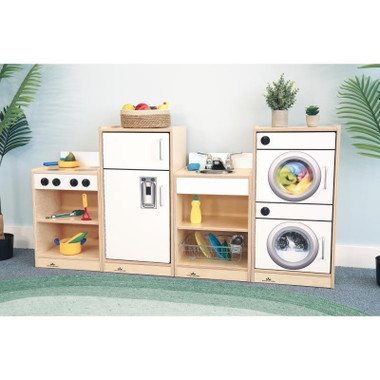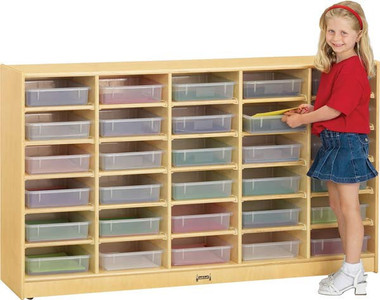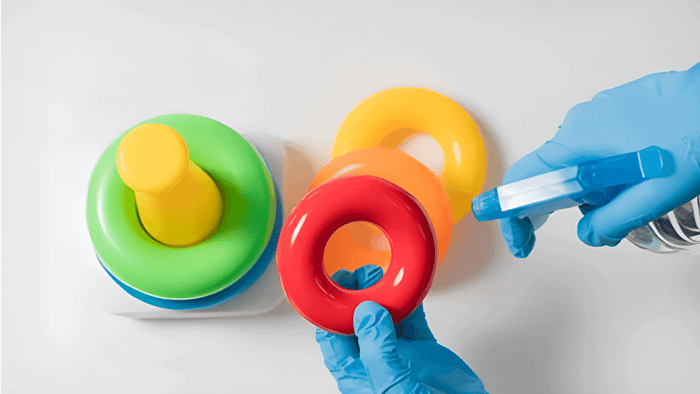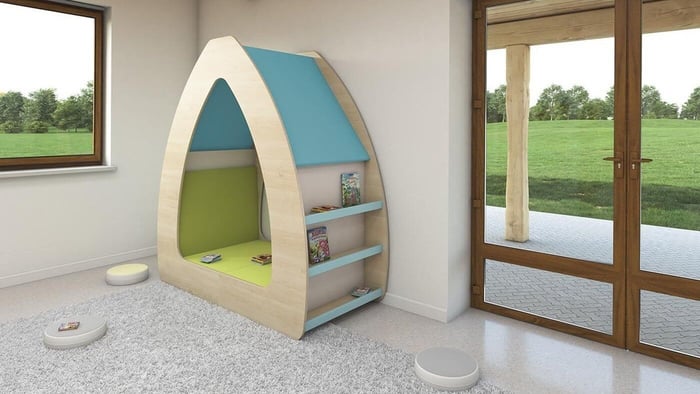
How to Design Gender Neutral Classroom Play Areas
Table of Contents
- Create inviting, interest-focused play spaces by organizing around skills rather than gender stereotypes. Use inclusive language, varied materials, and neutral storage systems to ensure all children feel welcome in every activity area.
- Beyond Pink and Blue: Why Gender-Neutral Play Areas Matter
- Core Principles for Gender-Neutral Classroom Design
- Creating Inviting Gender-Neutral Play Centers
- Selecting Materials That Challenge Stereotypes
- Fostering Inclusive Interaction in Play Spaces
- Practical Implementation Steps
- Transforming Classrooms into Spaces Where All Children Thrive
Create inviting, interest-focused play spaces by organizing around skills rather than gender stereotypes. Use inclusive language, varied materials, and neutral storage systems to ensure all children feel welcome in every activity area.
Key Takeaways
- Gender-neutral play areas focus on interests instead of stereotypes, giving children freedom to try any activity.
- Effective gender-neutral spaces use clear language, varied materials, and flexible themes appealing to all children.
- Making materials physically accessible and including diverse representation are essential for truly inclusive environments.
- Little People's Cove creates educational spaces where all children feel welcome to join any activity.
- Using neutral storage systems helps avoid unconscious gender coding in classroom setup.
Beyond Pink and Blue: Why Gender-Neutral Play Areas Matter
Traditional classroom design often unintentionally reinforces gender stereotypes through color-coded areas, gendered toy selections, and activity centers that subtly signal who belongs where. Creating gender-neutral play areas goes beyond avoiding pink and blue—it's about designing spaces where all children feel equally welcome to create and learn without artificial limitations. Little People's Cove understands that early childhood environments significantly impact how children see themselves and their possibilities, making thoughtful, inclusive classroom design profoundly important.
Gender-neutral play spaces allow children to develop interests based on their genuine preferences rather than societal expectations. When a dramatic play area isn't labeled as a "kitchen" or "housekeeping" area (implying it's primarily for girls) but instead becomes a "Community Living Space," both boys and girls feel welcome to practice life skills, role-play family scenarios, and develop empathy. Similarly, when building blocks and construction toys aren't implicitly marketed to boys through placement and decoration, all children gain access to the spatial reasoning and engineering foundations these materials provide.
Let's Play Toddler Kitchen Play Set - White

$1,489.00
Just like home and right-sized for toddlers! Rich in delightful character, our four-piece Let's Play Toddler Kitchen Play Set - White includes a stove, sink,...… read more
Core Principles for Gender-Neutral Classroom Design
1. Focus on interests and skills rather than gender
The foundation of gender-neutral classroom design begins with organizing spaces around activities and skills rather than presumed gender preferences. Instead of creating spaces that appeal to "what boys like" or "what girls enjoy," design centers that foster specific developmental skills: creativity, problem-solving, scientific inquiry, literacy, and social interaction. This approach ensures that all children can access the full range of learning opportunities without feeling they're crossing invisible gender boundaries.
Classroom labels should highlight the purpose and possibilities of each area: "Building Zone," "Creative Studio," or "Discovery Center." These descriptive, gender-neutral terms invite all children to participate based on interest alone, removing subtle barriers to learning.
2. Use inclusive language and imagery
The words and images we use in classroom environments send powerful messages about who belongs where. Inclusive language means using "friends," "learners," or "everyone" instead of "boys and girls." Similarly, classroom decorations, posters, and learning materials should feature diverse representations of people engaged in various activities, regardless of gender.
When creating labels, instructions, or classroom displays, make sure they're free from gender-specific language or imagery that might suggest certain activities are more appropriate for some children than others. This includes the books displayed in the reading area, which should show people of all genders in diverse roles and family structures.
3. Ensure physical accessibility for all children
Gender-neutral design works with universal design principles to create truly inclusive spaces. Physical accessibility means arranging furniture and materials so that all children, including those with mobility limitations, can fully engage with every play center. Consider height variations for tables and workspaces, clear pathways between centers, and multiple options for seating and positioning during activities.
Accessibility also includes sensory considerations—providing quiet spaces for children who need breaks from stimulation, considering lighting that works for all students, and offering multiple ways to engage with materials (visual, tactile, auditory).
Sky View Sanctuary Reading Nook

$1,799.99
Transform any Early Learning classroom with the captivating Sky View Sanctuary Reading Nook. Drawing children in with its elegantly curved side openings, this sanctuary offers...… read more
4. Incorporate diverse representation in materials
The toys, books, and learning materials in your classroom should reflect human diversity. Include dolls and figurines with various skin tones, body types, and ability representations. Stock your book collection with stories featuring diverse protagonists, including characters who challenge gender stereotypes and diverse family structures.
When selecting images for classroom decoration, include representations of people from different cultural backgrounds engaged in various activities that might challenge gender assumptions—women in STEM fields, men in nurturing roles, and people of all genders engaged in sports, arts, and community activities.
5. Offer choice and autonomy
A truly gender-neutral classroom respects children's agency by offering meaningful choices throughout the day. Create systems that allow children to select activities based on interest rather than having teachers assign them to centers. Consider using choice boards, center rotation systems that include everyone, or free-choice periods where children follow their curiosity.
When children have autonomy, they're more likely to try activities based on genuine interest rather than conforming to perceived expectations about what they "should" enjoy based on gender.
Creating Inviting Gender-Neutral Play Centers
1. The Builder's Corner (replacing construction/building zones)
Traditional building zones often unintentionally cater to boys through their marketing, colors, and themes. A gender-neutral Builder's Corner invites all children to develop spatial reasoning, problem-solving skills, and creative design thinking. Stock this area with diverse building materials beyond just blocks and traditional construction toys—include fabric pieces, cardboard tubes, natural materials, and loose parts that appeal to varied interests.
Decorations should feature diverse builders and architects of all genders, and project prompts should include building challenges that connect to various interests—creating homes for toy animals, designing art sculptures, or solving community problems through construction.
2. Creative Expression Studio (replacing art centers)
Transform the traditional art center into a Creative Expression Studio where all forms of artistic creation are celebrated. Include a wide range of materials and techniques beyond typical crafts—digital art tools, textile work, three-dimensional construction, and mixed media options. The goal is to move beyond activities that have been traditionally gendered (like sewing or woodworking) to create a space where all creative expressions are valued equally.
3. Discovery Lab (replacing science areas)
Science centers have historically been marketed toward boys, potentially discouraging girls from developing STEM interests. A gender-neutral Discovery Lab presents scientific work as accessible to everyone. Stock this area with a variety of materials that appeal to different learning styles—microscopes and magnifying glasses, living plants and animals to observe, sensory materials for hands-on work, and documentation tools like journals and cameras.
Feature scientists of all genders in your displays, particularly highlighting those who might challenge stereotypes. Change themes regularly to capture diverse interests, from astronomy to biology to chemistry to earth sciences.
Grow.upp Display Case Play Platform "A"

$4,376.36
Bring nature indoors and discover it while playing – this ingenious platform, with exhibition space under the reinforced glass base, makes it possible. The pull-out...… read more
4. Dramatic Play Hub (replacing housekeeping/dress-up)
Traditional housekeeping areas often reinforce domestic roles for girls while unintentionally excluding boys. A Dramatic Play Hub broadens the scope beyond home settings to include various community roles and scenarios. Rather than maintaining a permanent kitchen setup, change themes to include restaurants, veterinary clinics, post offices, construction sites, healthcare settings, and other community spaces.
Provide diverse clothing options without categorizing them as "boy" or "girl" costumes. Include props representing various professions and roles that children can use to try different identities and develop empathy by walking in others' shoes.
5. Literacy Nook (replacing reading corners)
Create a cozy, welcoming space filled with books that represent diverse characters, authors, and experiences. Include stories featuring characters who challenge gender norms, books by diverse authors, and narratives showing children and adults engaged in a wide range of activities regardless of gender.
The physical design should include various seating options (floor cushions, chairs, standing options) to accommodate different preferences and needs. Display books with covers visible, featuring diverse representations to signal that this space is for everyone.
Selecting Materials That Challenge Stereotypes
1. Diverse books featuring various gender expressions
Curate a classroom library that showcases characters with diverse gender expressions and family structures. Look for books that feature characters doing activities that might challenge stereotypes—boys expressing emotions, girls showing physical strength and leadership, and characters pursuing interests based on personality rather than gender.
Consider both fiction and non-fiction selections, including biographies of diverse individuals who have challenged gender expectations in their fields. Regularly check your collection to ensure balance and representation across all types of diversity.
2. Open-ended toys promoting creativity
Open-ended materials allow children to express themselves without prescribed outcomes or gender associations. Materials like blocks, clay, loose parts, fabrics, and natural elements can be transformed in countless ways, encouraging creativity without the limitations often built into highly structured toys.
Change materials regularly to maintain interest, and watch how children use them to inform future selections. When introducing new materials, present them without gender-specific language or suggestions that might limit children's imagination.
3. Role-play items representing various professions
Gather props and costumes representing diverse career options—medical tools, construction gear, teaching materials, science equipment, artistic tools, and service industry items. Present these materials without gender coding in their storage, labeling, or display.
Include real tools when possible (modified for safety) rather than toys that might be marketed in gendered ways. Photographs of diverse people doing these professions can help children see possibilities beyond stereotypes.
4. Color-neutral storage and organization
The containers, shelves, and organizational systems in your classroom communicate subtle messages about gender. Use natural materials, clear containers, or a diverse color palette rather than color-coding that reinforces stereotypes (like pink bins for dolls and blue bins for trucks).
Consider using picture labels on storage to help children independently access and return materials while reinforcing that all items are available to everyone.
30 Tray Storage Cubbie Cabinet with Paper Trays

$1,706.00
Enhance your organization and storage capability with the Jonti-Craft 30 Tray Storage Cubbie Cabinet with Paper Trays. This spacious and durable storage solution offers 30...… read more
Fostering Inclusive Interaction in Play Spaces
Creating gender-neutral physical spaces is just the beginning—the social environment is equally important. Teachers play a crucial role in modeling inclusive language, encouraging mixed-group play, and addressing stereotypical comments constructively.
When you notice children self-segregating by gender during play, gently encourage mixed groupings through collaborative projects or special interest groups focused on topics rather than gender. Comment on children's specific skills and interests without relating them to gender: "You're using careful stitches on your fabric" rather than "You're good at sewing for a boy."
When children make comments reflecting gender stereotypes, use these as teaching moments. Ask open-ended questions like "Why do you think that?" or "Does everyone feel that way?" rather than shutting down the conversation. Help children recognize that interests and abilities aren't determined by gender.
Practical Implementation Steps
1. Audit existing classroom setup
Begin by evaluating your current environment with fresh eyes. Look for subtle gender coding in colors, materials, images, and language. Notice which centers attract which children and consider why. Document areas where stereotypes might be unintentionally reinforced through materials, decorations, or teacher language.
2. Remove gender-specific labeling
Rename centers to focus on activities and skills rather than traditional gendered categories. Update visual labels, signs, and verbal references to ensure gender-neutral language throughout the classroom environment.
3. Introduce materials gradually
Rather than changing the entire classroom at once, which might feel disruptive to children, introduce new materials and arrangements gradually. This allows children to adjust and provides opportunities to observe how the changes impact play patterns and interactions.
4. Solicit feedback from children and families
Involve children in the process by asking what they enjoy about different areas and what they'd like to try. Listen carefully to their perspectives without imposing adult assumptions. Similarly, communicate with families about your inclusive approach, explaining the educational benefits of gender-neutral environments.
5. Monitor and adjust as needed
Regularly observe how children interact with the redesigned spaces. Note which areas are being used by all children and which might still show gender disparities in usage. Be willing to make further adjustments based on these observations and children's evolving interests.
Imagination Children's Food Truck

$1,599.00
Whether it's a food truck, mail delivery van, ice cream truck or other service vehicle, our Imagination Children's Food Truck will be the focal point of your...… read more
Transforming Classrooms into Spaces Where All Children Thrive
Creating gender-neutral play spaces isn't about eliminating differences—it's about widening possibilities. When we design classrooms that avoid limiting stereotypes, we allow children to develop their full potential based on their unique interests, strengths, and personalities rather than narrow gender expectations.
The most successful gender-neutral environments balance intentional design with flexibility, responding to children's interests while gently widening their horizons. By focusing on skills and inquiry rather than gender, teachers create spaces where all children can thrive, developing the diverse capabilities they'll need for our complex world.
Little People's Cove specializes in creating educational environments where children try freely without the limitations of gender stereotypes.
FAQs
What are the best strategies for designing gender-neutral play areas in classrooms?
Research recommends shifting from gendered themes to interest- or skills-based setups. Organize activity zones like a Builder’s Corner, Creative Studio, or Discovery Lab—labels that invite all children. Use inclusive language, remove gendered signage, and implement neutral storage to avoid subtle stereotypes. This approach ensures the play space is welcoming to everyone and fosters developmental learning over societal expectations.
Why is it important to create gender-neutral play spaces in classrooms?
Gender-neutral play areas help children explore based on interest rather than assumptions. By removing pink/blue cues and labels like "boys’ tools" or "girls’ kitchen," children feel free to engage with all toys and activities. Evidence shows this encourages cognitive, emotional, and social development, and reduces restrictive gender stereotypes.
How can teachers implement gender-neutral environments in their classroom on a budget?
Start by auditing your setup—remove gendered labels and introductory symbols. Gradually introduce neutral, open-ended materials like loose parts, neutral-tone furniture, and diverse imagery. Use inclusive language ("friends" or "everyone") and let children choose activities based on interest. This phased approach promotes autonomy and inclusivity without needing drastic or costly changes.



